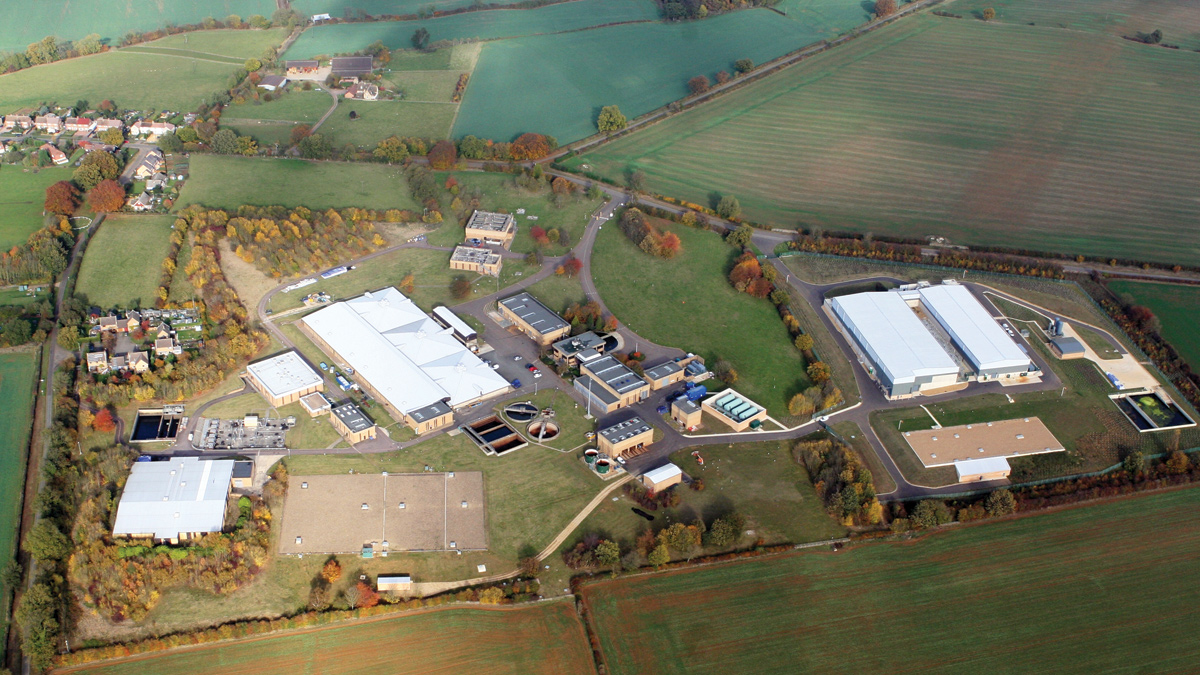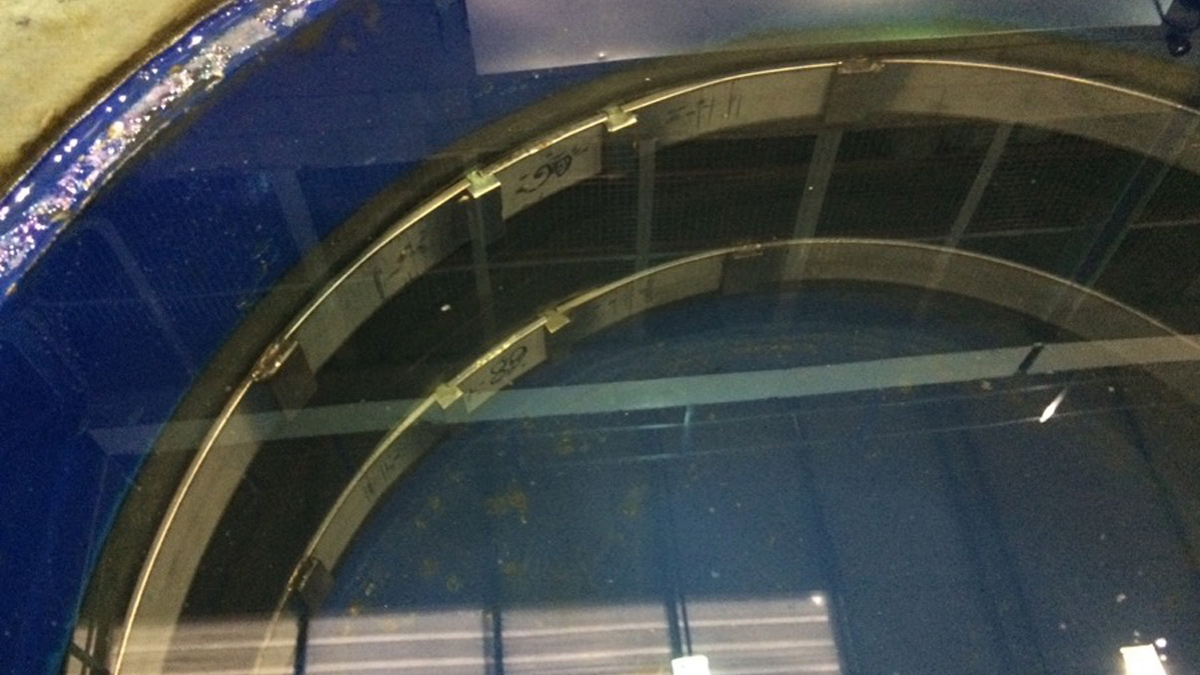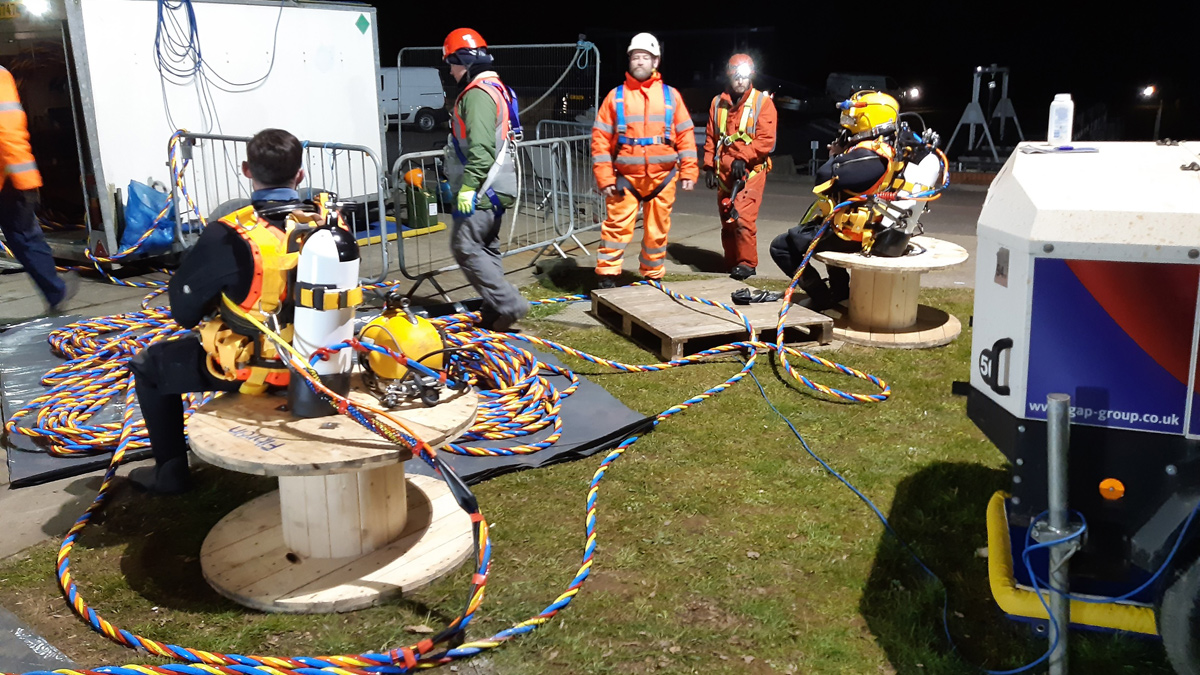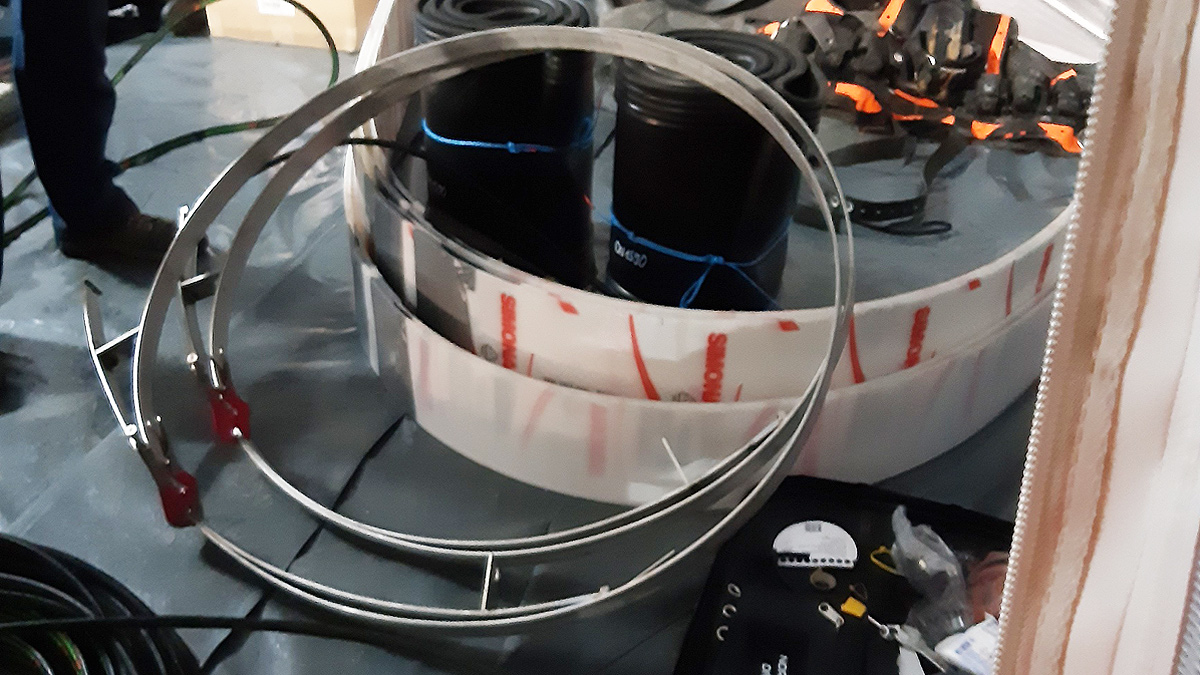Wing WTW (2022)

Wing and Morcott WTWs - Courtesy of Anglian Water @one Alliance
Wing WTW is part of the Anglian Water network, located in the county of Rutland in the East Midlands. The treatment site originally opened in 1977 and was then expanded to include a granular activated carbon (GAC) system in 1989. Morcott WTW, which was commissioned in 2010, is adjacent to Wing with a combined area of approximately 40 hectares. The Anglian Water team at Wing WTW identified a potential leak in the main outlet pipe of the GAC having found water in the contact tank underdrain. The 1600mm diameter pipe sits approximately 5m below ground level with a maximum flow rate of 240 megalitres per day. The steel pipe has a mix of welded and Teekay joints with Anglian Water previously having experienced small leaks in similar pipes in the surrounding area.
Background
Fixing the leak presented a challenge for the Anglian Water team as Wing WTW could not be shut down or the pipeline isolated for more than 6 hours at a time without affecting water supply to the customers fed by the facility and the neighbouring Morcott WTW.
Due to their previous experience in repairing similar leaks in the network, the team enlisted the support of the Anglian Water @one Alliance to deliver the Wing WTW repair (the @one Alliance had previously repaired a failed Teekay joint on a section of pipe during AMP6, but this had required a 2-week shutdown to successfully repair the joint).
Solution
During the initial planning process for the repair, the team considered excavating the pipe and placing an external clamp over the joints, sealing the leak externally. However, the main concern with this approach was the risk of excavating the main itself with several factors resulting in a potentially high-risk repair including:
- The size and depth of the pipe.
- The unconfirmed scale of the leak.
- A very tight working space inside the grounds of an active water treatment facility.
- The risk of requiring a significant isolation of the main to provide safe working access for repair.
In order for excavation to be considered viable, the @one team would have needed to install a bypass pipe to negate the risk to supply while the main line was under repair. This would have required around 150m of 1400mm pipework to be installed on-site alongside 400kw of submersible pumping, significantly increasing the amount of carbon used in the project as well as significantly adding to the cost of the repair. Using this method could have taken the @one team anywhere from 2-3 days to 2 weeks depending on what they uncovered during the excavation.
To avoid such a high-risk repair, during the solution selection phase the Anglian Water and @one teams decided that the most suitable option was to use divers to install an internal repair coupling, sealing the leaking joint from the inside.
Live feed CCTV and acoustic leak detection was used on the pipeline to review its condition and determine where the Teekay joints were located along the length of the pipe. Whilst he footage showed the pipeline to be in good condition with six Teekay joints, two of which produced noises suspected to be leak, the team could not be 100% certain the noises heard using the acoustic detection were leaks due to the level of background noise created by the rest of the water treatment works.
To complete the repair work, the team identified PMP Utilities and their specialist pipe joint repair seal AMEX-10 as a potential solution for the leak. The @one Alliance team were able to get first-hand accounts of PMP’s abilities with the company having previously worked on projects with alliance partner companies Mott MacDonald Bentley (MMB) and Balfour Beatty who ratified the use of PMP.
During this phase PMP Utilities undertook a site visit and survey of Wing WTW and demonstrated the AMEX-10 seal to Anglian Water and the @one alliance in a ground level demonstration.

Joint tested in preparation – Courtesy of Anglian Water @one Alliance
PMP’s solution was then sent to an internal water quality review where PMP Utilities provided evidence that their solution was compliant with both Regulation 31 of the Water Supply Regulations 2016 and the Water Regulations Approval Scheme regarding chemicals and construction products used in water supply networks by using approved materials and a safe method of access, demonstrating to Anglian Water that there was no risk of water contamination.
Due to the specialist method of the repair, Anglian Water increased the scope of the works from the initial two Teekay joints that were suspected to have a leak, to include all six of the joints along the 75m section of pipe. The decision to undergo repair works on all the Teekay joints was to make sure they had the best chance of fixing the existing leakage, whilst helping future-proof that section of the network; with PMP giving the AMEX-10 seal a 50-year expected service life.
Wing WTW Joint Repairs: Supply Chain – key participants
- Delivery partner: Anglian Water @one Alliance
- AMEX-10 seals: PMP Utilities
- Dive team: ABCO Divers
Result
Once the AMEX-10 solution was agreed upon the Anglian Water Operations team developed a system management strategy that allowed engineers to isolate Wing WTW for the first time in eight years giving the dive team a six-hour overnight window to complete the works while the demand placed on the treatment works was at its lowest.
The works were scheduled over four night-shifts with ABCO Divers undertaking the dives once every three days, with the pipeline having to be flushed-to-waste after each dive before it could re-enter service.

Divers getting ready for a night dive – Courtesy of Anglian Water @one Alliance
All six seals were successfully installed within the required window resulting in a reduction in leakage of 10-15 litres per second or approximately 1 megalitre per day. All of this work was completed without digging a single hole or interrupting supply to any of the people serviced by the works.
Because there was no excavation or building works required during the project this solution resulted in a 99% reduction in carbon usage compared to the alternative excavation solution.
The project has also resulted in a 24.5% efficiency saving for the Anglian Water @one Alliance. In the initial stages of the project Anglian Water had estimated a cost of £400,000 for the repair of one joint which would not have included the cost of a bypass pipeline being installed on-site.
Once PMP Utilities’ AMEX-10 solution was introduced, Anglian Water increased its initial projected cost for the project to £678,000, however the final cost of the solution for all six joints came in at £482,000 just over £80,000 more than the projected cost for one seal being repaired by excavation and resulting in the 24.5% efficiency the @one team managed to achieve.

Joints ready for installation – Courtesy of Anglian Water @one Alliance
The Anglian Water @one Alliance is an organisation formed between Anglian Water Asset Delivery and its six partners Balfour Beatty, Barhale, Mott Macdonald Bentley (MMB), MWH Treatment, Skanska and Sweco. This alliance delivers capital projects for Anglian Water using the experience of all its partners to ensure the most efficient and innovative solutions.



